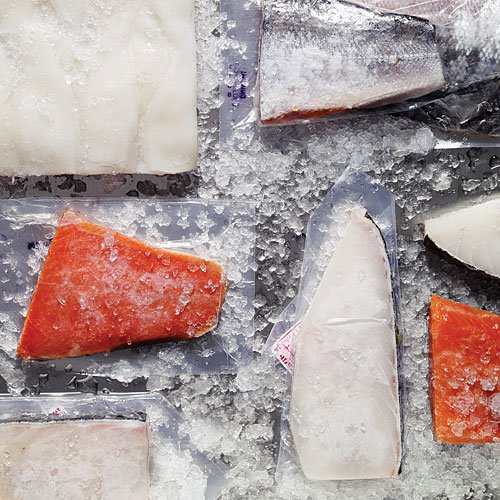The seafood industry has prospered and would still have a bright future because of the process of freezing freshly-caught seafood. Commonly, the fish industry calls this method as ”freezing at sea”. Even though many seafood suppliers are employing this process, its success is greatly influenced by the correct and appropriate handling of frozen seafood once unloaded from the fishing trawler’s cold-store. Fresh-frozen seafood will still lose its quality and “freshness” when they are mishandled. Indo Merchandise, Inc. is very much aware of this and does everything possible to maintain premium quality of our fresh-frozen tuna products from our trawler’s to your kitchen, counters or freezers.
Proper handling of frozen seafood starts even in the boat minutes after they are harvested or caught. Freshly-caught fish or any other seafood is usually stored on a cold store. However, a cold store is not sufficient enough even if it is running on a low temperature. Like Indo Merchandise, many fisheries use special equipment which run temperatures much lower than -20F on board their trawlers to freeze freshly-caught seafood rapidly to storage temperature in their cold stores.
When frozen seafood arrives at the dock, they should not be left lying open since they will warm up very quickly after discharge from the trawler. If they have warmed up on the quayside, it will usually take weeks for a cold store to cool down an average amount of sea-frozen seafood. By that time, much of the seafood will have spoiled. Cold stores on docks usually don’t have the special equipment used in fishing trawlers to freeze seafood immediately to ideal storage temperature. Therefore, frozen seafood must be transferred from one store to another when necessary. Frozen seafood should be removed from cold store of the trawler to that on the shore rapidly.
Although rapidly transfer is of the essence, rough handling of fresh-frozen seafood will have a great effect on the quality and “freshness” of the product. Indo Merchandise is very cautious when handling fresh-frozen tuna. Since fresh-frozen tuna are very cold (as they should be to retain high quality and nutrients), they are quite brittle so poor handling when transporting or transferring these seafood products can cause damage. At times, some damage to tuna or any other seafood can only be noticed or observed when they are completely thawed.
With blocks of frozen fish, many fisheries transfer them via a conveyor. However, if the dock is not ideally situated, it is best to stack the frozen blocks of fish rapidly and carefully on wooden or metal bins and immediately move them to the cold store or on a pre-cooled insulated truck. Indo Merchandise will avoid further handling of their fresh-frozen tuna products unless they are needed for thawing or processing. Just like any other frozen seafood, they should remain in the cold store unless considered necessary to remove them.
Practicing proper handling can be a difference between premium quality fresh-frozen seafood and inferior frozen sea produce. When the seafood reaches its consumers, retailers, or foodservice entrepreneurs in good quality condition, it greatly depends on how it is cautiously handled even from the moment when it was caught or harvested. Indo Merchandise, Inc. absolutely guarantees that care is always practice and given such significance when handling their tuna products.

